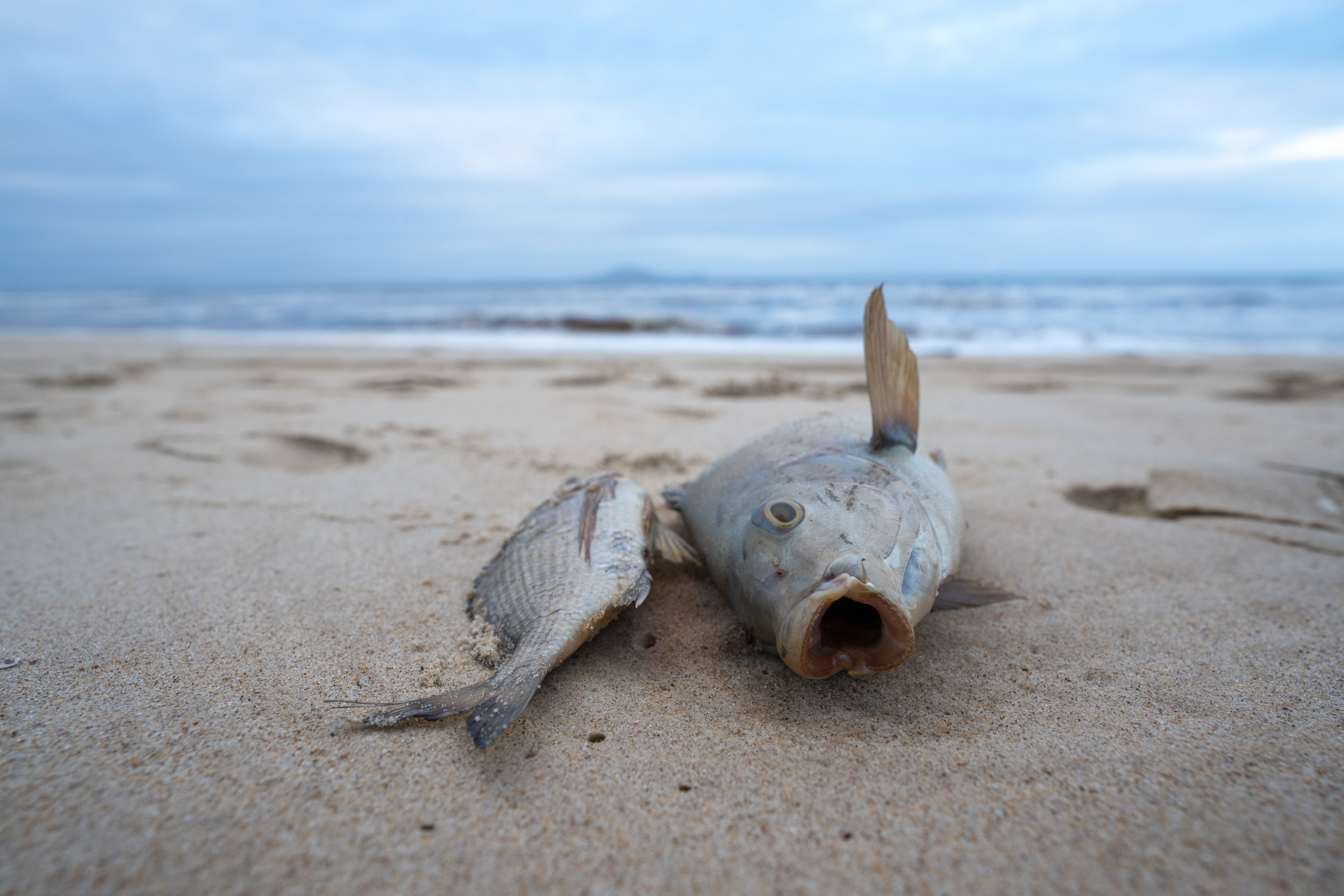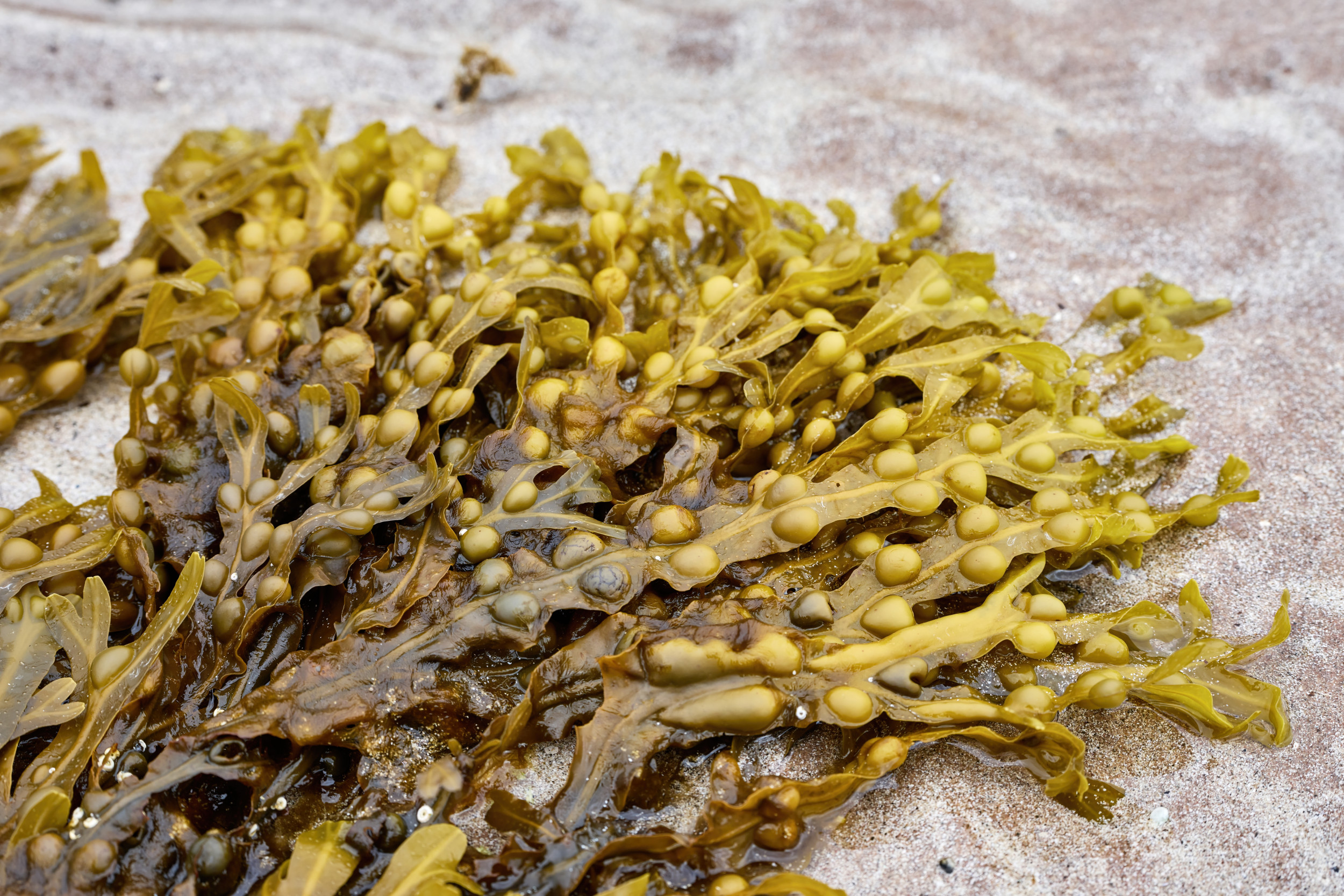The acidification of the Earth's oceans is expected to triple by 2100, and could lead to major impacts on biodiversity across U.S. coastlines.
With climbing atmospheric CO2, huge amounts of this gas are absorbed by the oceans, dissolving to form carbonic acid, making the waters more and more acidic. This affects a huge number of marine animals and plants alike, but its impact on fleshy seaweeds around the coast may have knock-on effects across the food web, and make our beaches much less pleasant, according to a new study published in the journal Current Biology.
"We found evidence that OA (ocean acidification) could make seaweeds more vulnerable to physical damage, which could come from storms or from grazing animals," study author and marine sciences researcher at the University of Gothenburg in Sweden, Alexandra Kinnby, told Newsweek.
"If this vulnerability means that the amount of seaweed decreases significantly it could have effects on the entire coast. Seaweeds form the base of the near-shore food web, they provide food and shelter to many small organisms which are in turn food for larger species," she said.
 A stock image of dead fish on a beach. Ocean acidification has been found to weaken and kill seaweeds, which could have knock-on effects on various species.
ISTOCK / GETTY IMAGES PLUS
A stock image of dead fish on a beach. Ocean acidification has been found to weaken and kill seaweeds, which could have knock-on effects on various species.
ISTOCK / GETTY IMAGES PLUS
"This makes the actual impact on any given place very hard to predict, but it could have negative effects on things like commercial fishing (by reducing the food available for the fish stock), water quality (seaweeds help to filter water by absorbing nutrients), or tourism (because a beach with murky, smelly water and no fish is less appealing to tourists than a beach with clear, clean water and lots of fish)," Kinnby said.
The researchers found this out by exposing a common fleshy seaweed species bladderwrack to levels of acidification thought likely to occur by 2100 if current rates continue. They discovered that the acidification weakened the structure of the seaweed's tissues and made it more likely to die.
"Bladderwrack is a very important brown alga (seaweed) along rocky coastlines. Typically it can tolerate even thrive in turbulent, high-energy environments (think waves and strong currents)," Karin Limburg, a distinguished professor of environmental biology at the State University of New York College of Environmental Science and Forestry, told Newsweek.
"But what this study shows it that, even though the increase in CO2 increases photosynthesis and growth, it also weakened the plants and the leaves (thalli) broke off," Limburg said. "Bladderwrack is known as an important habitat for numerous sea creatures, from worms to clams to fishes and everything in between. Thus, the breakup of plants would mean that habitat is degraded. And degradation might also permit other algal species with different properties to come in and take over.
"A good example of that is in the Baltic Sea, where eutrophication degraded bladderwrack and filamentous algae took over. From both ecological and human aesthetic perspectives, this very much degraded coastal ecosystems in much of the Baltic."
Read more Juvenile whale hit by boat propeller left with "severe" head injuries Thousands of dead fish are washing up across Florida - here's why Mystery of strange marks on sea floor solved by scientists Warming oceans may be having an unexpected effect on fish Rare dumbo octopus spotted a mile beneath ocean surfaceThe acidification of the oceans will only increase as we continue to release CO2 into the atmosphere.
"As more carbon dioxide is released into the atmosphere around the world, about one-third of that carbon dioxide makes its way into the oceans through natural processes. Once it's in the ocean the carbon dioxide reacts to form carbonic acid," Kinnby said. "This is also a natural process, but because the amount of carbon dioxide in the atmosphere is increasing, so too is the amount of carbonic acid in the ocean, which drives the pH (acidity) changes we are already seeing today."
Other sea creatures are being impacted by the acidification of the ocean waters because of acid eroding their shells or exoskeletons.
"Carbonate is crucial to a great diversity of organisms such as snails, limpets, oysters, squids, urchins, and corals, among others [as it is] needed to create their calcium-rich shells or internal skeletons. These calcium-needing species are likely to be most vulnerable to rising ocean acidification," Bill Laurance, a distinguished research professor of ecology at James Cook University in Australia, told Newsweek.
It can also prevent sea creatures from rebuilding their shells, as it alters the ability of organisms to extract dissolved calcium from water and convert it into solid that they use for their shells.
"That's because at lower pH, the calcium tends to stay in solution longer and it is energetically harder for creatures to extract it," Limburg said.
 Stock image of bladderwrack on a sandy beach in Gruinard Bay, Scotland. Research has shown that acidification weakens the structure of the seaweed's tissues and makes it more likely to die.
ISTOCK / GETTY IMAGES PLUS
Stock image of bladderwrack on a sandy beach in Gruinard Bay, Scotland. Research has shown that acidification weakens the structure of the seaweed's tissues and makes it more likely to die.
ISTOCK / GETTY IMAGES PLUS
In essence, OA is affecting everything in the ocean to some extent.
"Some creatures are more powerfully affected than others," Kinnby said. "Because the mechanism for change is coming from the atmosphere the effects are strongest in shallow water near the surface. The species that are most well-known to be impacted are those with calcium carbonate shells or exoskeletons, like corals or snails, but we are also seeing impacts on other species as well, like in our study.
"The ocean is very interconnected with many different plants and animals interacting with each other in complex ways, so effects on one organism, like a seaweed or a coral, can have knock-on effects on other species."
The only way to prevent this acidification of the oceans is to stop releasing so much CO2 into the air, the experts say.
"From a geological perspective, the current rate of acid production is really high," Limburg said. "Given that it tracks the rate of CO2 loading from fossil fuel burning, my guess is it will continue to accelerate until we can control fossil fuel use.
"Policies need to change, and voters need to get out and elect people into government who will do that. This is not trivial, but it is absolutely necessary."
Correction 9/28/23, 4:10 a.m. ET: This article has been amended to state that the study was published in the journal Current Biology, not Cell Biology as originally stated.
Do you have a tip on a science story that Newsweek should be covering? Do you have a question about ocean acidification? Let us know via science@newsweek.com.
Request Reprint & Licensing, Submit Correction or view Editorial Guidelines




